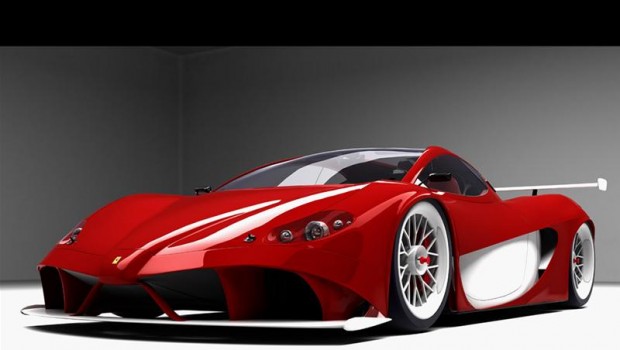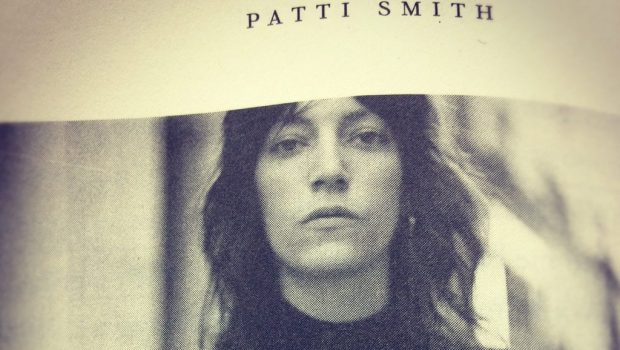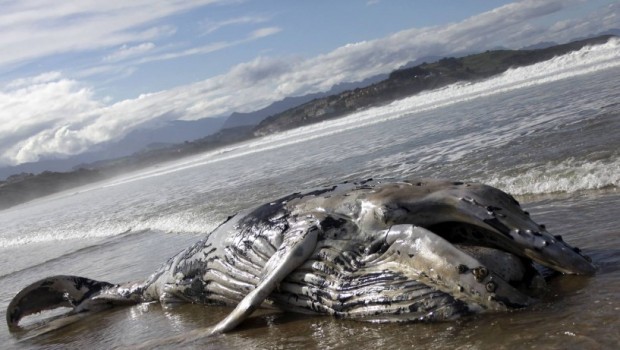Cars Are The Bones of Everything, The Runes of my Life Love Cars
Peter Behrens
I could tell you I’m interested in cars, but that sounds all wrong in terms of their place in my life. I’m interested in a lot of things: Irish history, lesbian novels, roses, the geography of Canada, airfares to New York, how my mutual funds are doing. Cars, an interest? No. Cars, a drive, like sex: subterranean in some phases, idling in neutral; at other times, popping the clutch and squealing right out of control down a lost highway where advertising meets wanderlust meets fetish object.
I used to tell people that literature & love were what kept me going, but it is the car obsession–cars of the mid Fifties to late Sixties, the cars I grew up with–that has been steering me as long as I remember. Now that I have turned forty I seem helpless before it, haunting auctions and swap meets with the same anxiety and despair I remember feeling when I was fifteen and nauseated, trying to work up the nerve to ask a girl from one of the private schools in Montreal–Miss Edgar’s School, say, or Trafalgar, or The Study–for a dance, one lousy dance, at the tense revels my own school sponsored.
A passion for cars seems banal and shameful and I recoil at the image of myself, now arrived at middle age, on the starting line of the white guy’s slow decline, which begins with a hobby and prostate problems, and ends in exhaustion and death in a room with the air conditioning turned up too high, at a medical center run by a health conglomerate, near some freeway interchange in Florida.
Cars go deep. Cars, I tell you, cars are the bones of everything, the runes of my life.
The first car I remember is the 1956 Buick Special my father bought when I was two. It was gunmetal grey, the interior red with black seat inlays. Most clearly, I remember the steering wheel. It had a special iconic fizz. Steering wheels are the center of the car, the point where car, man and road really connect, and they’re all about power and who’s in charge. The Buick’s wheel was dense, shiny black plastic with three spokes. It had a plastic marque badge at the center, knife-edge strips of chrome that sounded the horn, and an aggressive masculine feel, the most masculine object you can imagine. My parents bought a canvas car seat that hung over the Buick’s front seat on a couple of metal brackets and allowed me to sit eye-level with the windshield and actually scan the road up ahead: the same view my father had. Attached to this rig was a dummy steering wheel of my own, so I could kid myself I was driving the car, a delusion I don’t recall ever buying into. It was obvious who was in charge, and until I could get my hands on his wheel I wasn’t going to count for much, or have much say in where I was headed.
I was five when we traded in the Buick. My father brought me along when he picked up the new car at Midtown Motors on Dorchester Boulevard (now Boul. René-Levesque) in Montreal. We kept it for the customary three years, trading it in 1962 when I was eight, but somehow it became the car of my dreams, the one I’ve always wanted to recapture. It was a 1959 two-door Pontiac Catalina, white, with a grey vinyl interior.
A ‘59 Pontiac is a strange, unlovely car, though certainly an improvement over the swollen, bulbous ‘58. 1959 was the first year of the famous Wide Track Pontiacs, with their huge, flat bodies that looked disappointing at first, like bread that hadn’t risen. You could sit four people in the front seat, and Motor Trend declared Pontiac Car of the Year, but a lot of citizens had to rebuild their garages to fit them inside.
It is possible I want this car because it symbolizes an era when my father was in his prime–in 1959-62, he seemed to me wise and all-powerful, a lot like God. An era when I, as a native member of the North American middle class, felt secure and protected, reasonably certain of what the future would bring. In the Catalina I intimately knew my place in the world, which was right behind my father. I learned to lean forward from the backseat, my forearm strung across the angle between the back of his driver’s seat and my window frame. My chin rested on my arm, so that I was as close to him as possible. Close enough to know the individual bristles of hairs on the back of his neck, and the whorls and seams of his skin. Able to look ahead through the windshield, instead of to the side, so that I could see what he saw, the road unfolding, and not the passively passing scenery, the streaming houses and boulevards and countryside, the effluvia of sprawled towns. I didn’t want scenery. I wanted control, and I liked sitting with my head up near his because I could pretend that it was me, not him, guiding the car.
Men study their fathers to surpass them, and though they might build temples of tribute later, out in the garage–might spend months scouring the sunny junkyards of Arizona for just the right chunk of trim–in their hearts, they are satisfied that the old men are gone, exhausted, over. We want these cars to memorialize our fathers, but also our victory over them.
My father had the only 1959 Catalina in Montreal. The Canadian Pontiac models–the Strato Chief, Laurentian, and Parisienne–were a flatfooted step behind in the Pontiac revolution: they had the vast, new bodies bolted onto a narrow Chevrolet chassis. The wheels were five inches inboard and the cars looked teetering and clumsy, like boxcars.
Somehow, my father managed to avoid the Canadian lemon and acquire the genuine US article. This added to the car’s glamour for me, since everything powerful, complicated and alluring seemed to drift up from the American border.
Cars used to have moods; you could read their temperament from the configuration of headlights–eyes–and grille & front bumper–mouth, teeth, nose. Sometimes the rake of a windshield combined with protruding eyes and a thin, cold, chrome snout gave a car an arrogant, supercilious expression, like the ‘49-’51 Chevys, which always looked angry to me. ‘58 Buicks with double headlights and massive, goofy bumpers looked like kids in the schoolyard who thought they were tough but were really kind of slow, easy to trick in a fight. ‘59 Chevys have a ‘fuck you’ expression that’s archly feline, feminine and sexy; even the ludicrous cat’s eye configuration of the taillights has a kind of daring, damning trash style that is moving and reckless. ‘57 Chevys look companionable and eager to please. ‘60 Pontiacs are bemused, but willing. ‘59 Pontiacs are forceful, prepared to pounce, eager to win at any cost, whereas the ‘62s seem clean, earnest, and dull.
The closest thing to a sex life I had from 1962 to 1965 was my yearning quest for 1959 Catalinas. We had traded in the car of my dreams for a khaki 1962 Pontiac Laurentian. Bereft, I scanned the streets for Catalinas, knowing there weren’t any others in Canada. To pursue my fetish, I had to become preoccupied with crossing the American border
Riding north, the Plains Indians had noticed the radiant power of that US/Canada boundary. A few stone cairns set out on the prairie could jerk the bluecoat cavalry to an abrupt stop; Medicine Line, the Bloods and Peigans called it. The Quebec/New England border had a power that was, likewise, tangible. Across that line, everyone spoke English. The chronic disorientation we felt in our own country could be cast off. Striking out into foreign territory, we finally felt at home.
My father liked to get on the road early. We were across the border an hour later, stopping for breakfast at St. Albans, Vermont. While my family enjoyed their eggs, sausage patties and toast, with the curious individual packets of jam, marmalade and “mixed fruit” jelly, I was out wandering the sleepy elm-lined streets, pursuing my fetish.
I relished the pungency of American air that was flavored, just outside the cafe, by the sweet complex musk of American cigarette smoke, so unlike the acrid flat aroma of the British-style cigarettes–Player’s and Black Cats–my parents were addicted to. Rocks and trees and river water were now American. Main Street was strung with cars parked in neat diagonals to the curb, something we never did in Quebec. The cars themselves came in brighter, more confident shades than the ink blues and depressive grays popular in watchful, careful Canada.
As I strolled the early morning streets, a squinting, skinny, ten-year-old in baggy shorts, with a fuzzy summer bean shave, I kept an unnaturally sharp eye out for ‘59 Pontiacs. If I happened to spot one, I’d slow my walk to preserve the excitement, not looking at the car directly, but behaving as casually and diffidently as I could, husbanding most of the thrill until I was right alongside, then letting the–whatever it was, tactility, passion, fetishism, love–have its day.
The style of my longing was sexual, but transposed to another key. What I needed to do was to stand as close to the car as possible and stare inside. Touching wasn’t banned but was not an important part of the ritual. The talisman of my worship was the Catalina steering wheel. (The Canadian Pontiacs’ wheels, subtly different in detail, were no good; the gaudy American Bonnevilles’ wheels, crusted with chrome, studded with clear acrylic sections, meant absolutely nothing to me.) Every other aspect of a Catalina was peripheral to the troubled, yearning delight I experienced staring at its steering wheel. Though I did get a dimmer, more diffuse buzz from the familiar dashboard layout, the embossing on the vinyl seat covers, and the boxy chrome ashtrays, and the exterior lines–the little star burst twin fins above the oval taillights, the split grill, the awesome width–also gave me joy.
The style of my veneration may have been shaped by the fact that I was born and raised in Quebec: before the profane secularizing revolution of the Sixties, a country as steeped in Catholicism as Poland or western Ireland. The iconic, fetishist side of French Canadian and Irish Catholicism was soaked into me, a Catholicism dangling its earthy, animistic roots. My family lived literally in the shadow of St. Joseph’s Oratory, a domed shrine on the slope of Mount Royal. Pilgrims from all over eastern Canada and New England came by the chartered busload seeking cures from physical disability through the ardor of prayer. Every day we saw them ascending the wooden steps on their knees, up the mountain to the church, where a chapel bristled with racks of hand-carved crutches, yellowing prosthetic limbs, corrective shoes, and ugly iron braces the handicapped and faithful had deposited there, like coins tossed into a fountain.
Objects were venerated. The priest polishing his chalice and paten after Holy Communion, carefully tending the rest of the altar hardware, only emphasized that things could possess tremendous power. Every parish church had relics of a saint embedded in the altar, even if it was just a scrap of thumb bone. Churches were crammed with objects: in St-Bonsecours, the sailors’ church down by the harbor, ship models dangled from the ceiling. In a side altar at Notre Dame Basilica, a wax dummy of the Blessed Marguerite Bourgeoys slept on satin pillows, behind Plexiglas. On the day of my First Communion, I had been presented with a rosary in a tiny silver box, a scapular holy picture to wear under my shirt, and a crucifix with a scale-model Jesus, which my mother hung on the wall of her bedroom and kissed each time she went out, so that the tiny feet were smudged with scarlet lipstick.
In 1962, the year we traded in the Catalina, I was finally old enough to be enrolled at St. Kevin’s, the nearest English-language public school. Near but far: we lived on the green slope of Mount Royal, and St. Kevin’s was on the grim flat of Côte Des Neiges, a zone of cheap postwar apartment blocks laid over what had once been melon fields. I was sent to my first day of class wearing a grey flannel suit my English grandmother had mailed across the ocean. This loathsome get-up–short pants, elasticized snake belt, thick woolen knee socks, brown oxfords and all–was apparently what proper British schoolboys wore, along with belted navy blue gabardine overcoats and weird peaked caps, all utterly unsuited to the Montreal climate of muggy river heat in June and dead-cold Januarys. St Kevin’s playground resembled a location set for an infant West Side Story, with nine-year-old Italians standing in for Puerto Ricans and underfed Montreal Irish and Newfoundlanders cast as the Jets. Kids named Marcello, Stefano, or Billy O’Doul greased their hair into miniature ducktails, carried combs in their back pockets, and would not have been caught dead in short pants.
My yearning for the Catalina–for the fast, painless transitions it had once offered–may have been a response to the isolation I felt when, outfitted as Little Lord Fauntleroy, I went mincing into the slums. I was unique at St Kevin’s, a weird vision in scratchy uncomfortably authentic British flannel–and so were my parents. Maybe a dozen kids at the school had cars in the family, and they were used. Lots of mothers were cleaning ladies and walked as if their feet had been permanently damaged. My mother, with her Jackie Kennedy suits and bouffant Black Irish hair, had only worked for a couple of years, booking VIP passengers on transatlantic flights during the war, flirting with RAF pilots, and shooting craps with cabdrivers and Negro porters at Dorval Airport, men who would recognize her twenty years later, calling out from their cabs–“Frankie! Frankie O’Brien!” I always thought she had the perfect name for owning an Irish bar–Frankie O’Brien’s–a racy downtown joint with great food and beautiful women and jazz players blowing horns into the small hours, and probably a high-stakes crap game in a back room. Picking me up at St Kevin’s, she looked carefree and younger than anyone else’s mother, lounging at the wheel, smoking a Black Cat cigarette, its cork tip stained with the ubiquitous lipstick, listening to Nat King Cole.
By then I was the sort of boy who watched Highway Patrol out of love for the stubby, aerodynamic 1950 Fords that Broderick Crawford drove. Who preferred Jeff’s Mom’s two-tone station wagons to the canine herself on Lassie. Who caught Sky King reruns for the chrome snouts of the mid-50’s Dodges and Plymouths that natty Sky and his pony-tailed niece–the tiny, feisty, blonde Penny–piloted at speed across the Mojave when they weren’t able to fly Sky’s Cessna. The sizable Chrysler products raised pearl-grey plumes of dust that went feathering across the high desert of my imagination so that when I was in the second grade, I developed a fantasy that I would somehow get my hands on a car and travel west with Linda, a small Irish girl with freckles and weird, pale eyes, whose desk was rooted on the far side of the classroom. She would, I told myself, make a great traveling companion. When I was bored, I discreetly wedged a wooden ruler under the lid of my desk and pretended it was a gearshift. There I was behind the wheel and Linda in her tartan tunic, snug and safe beside me, in some massive Dodge Crown Royale, barreling west.
I knew all about the cars my uncles owned, understood Uncle Danny’s sporting bent for cream convertibles and Mercurys, a taste that had tuned itself down to four-door sedans by the time his sixth child was born. I remembered each of the station wagons–from the two-tone green ‘56 Ford to the ‘67 Country Squire–that Uncle Gordon, the only Protestant in the family, favored. Uncle Ferdinand, conservative and French Canadian, always bought Chevrolets; and Uncle Paul, the brisk sales manager, went for two-door Buicks with big V-8’s: the ‘58 Century, the snappy ‘61 Le Sabre.
I could make myself dizzy meditating on the idea that all the roads I had ever been on were connected, so that going anywhere, anywhere, was just a matter of starting out and taking the right sequence of turns. It was a promising idea, although the few times I did make my move–tossing toys in a suitcase, along with a few clothes, and bidding farewell to my parents–I never got further than halfway to Queen Mary Road before being overcome by a self-pity that eventually sent me reeling home, in tears.
When we still had the Catalina, we spent summer holidays in a rented cottage on a beach in southern Maine. A mile down the road was a store where the out-of-state dailies arrived every evening at six, kicked in bundles off the back of a maroon Portland News Agency truck that didn’t deign to stop. I drove down to the store with my father, sunburnt, my skin licked with salt, streaked with powdery white sand, salt crusting at my lips, feet bare on the cool rubber floormats of our Catalina. I cranked my window down, planed my hand in the light air.
Cars idled in front of the store. They bore different license plates: red-brown for Massachusetts, blue Connecticuts, sand-coloured Maine plates with their red metal year tags crimped in the corners. Our flimsy, flamboyant aluminum Quebec plates were changed every year. The 1960s were black with yellow numbers and a fleur de lys.
My father handed me a dime for the paper and I raced in. There was a screen door that slapped shut with a bright, cracking noise, like the pistol at the start of a race. It was dim inside, smelling of fresh baseball cards and old saltwater taffy. The floor was unswept, perpetually sandy. I grabbed a limp, grey Montreal Star off the stack, tossed the dime to the crone behind the counter, and trotted back out to the Catalina. And right there, I suppose, right there was where my love for the wheel got rolling, on summer evenings in Maine in 1960 when I was five, my father fifty and in his prime, and he let me sit on his lap and steer along our bumpy, sandy road, past the fragrant salt marsh and the shingled cottages where men were firing up barbecues and kids were garden-hosing beach sand off their hides. There was nothing like it: the mass of the car wholly in my hands while I was surrounded by his big body and the eternal security it represented. My father propped his forearm at the window, draped his right arm across the top of the seat, and sat back, sun glinting on his Ray Bans as I steered us, steered us home.
Is this why I find myself living now in a sandy beach town with Catalina one of the islands in a mountainy chain that begins twenty miles off our shore? (Ventura, another long-ago Pontiac model, is also a gritty city thirty miles down the road, and Malibu, once a popular mid-size Chevrolet, is a place I pass through driving into L.A. for meetings with producers, who aim to live one day in Bel Air –not the car, but the suburb. I could go on: El Camino is a Chevy of the Fifties through Seventies and also a California boulevard lined with pancake restaurants and Quik Lube shops.)
Yesterday, my wife and I headed out for the beach about six p.m. We had just spent fifty minutes with a marriage counselor and it hadn’t gone very well between us, though we were determined to stick to the course we were on, involving blood work and semen tests, ultrasounds, fertility drugs and egg extraction, all aiming to give us a chance at this baby we had been too preoccupied and unsettled to think much about up until now.
We started out walking on the sand together. It was a pretty evening but cool, with a summer fog bank hanging a couple of hundred yards off shore and a steady breeze. She was wearing a sweater and a windbreaker and I was in a T-shirt. We had left our shoes in the car. The fight we’d been having in front of the marriage counselor broke out again as we were walking on the flat, shining sand, and we broke apart finally, with harsh words on both sides, and I walked on ahead, not looking back to see if she was following. I walked for a mile into the wind, then it got too cold and I turned around, and about halfway back I found her sitting near the base of the shale cliffs, protected from the wind by some driftwood. She was sitting in the dappled sand, quiet and solitary, the sunset light making her face golden, and her bare legs and brown bare feet were tremendously attractive to me. I sat down beside her hoping for some sort of spontaneous reconciliation, but the argument broke out again, and ended with her insisting that she wanted to be left alone, and me stalking away from her.
We met up again twenty minutes or so later at the parking lot where we had left the car. I had gotten there first, but she had the keys. We were so annoyed with each other we couldn’t speak. She slid behind the wheel and for a moment I thought she wasn’t going to flip up the lock on my side. But she did, and I flopped into the passenger seat and we started driving home.
At the first intersection, I saw a big green bomber, a 1960 Pontiac, turn into our lane about a hundred yards ahead of us. It was lime green, with some surface rust: an untouched, unrestored original. It wasn’t a ‘59, but it was a Catalina; it was close, essentially the same car except for some sheet metal. I wanted to follow it, but she was at the wheel, and I didn’t want to ask her the favor.
We drove in silence for two miles, up a long shallow hill and past a couple of stoplights, and sometimes I could see the Pontiac, and sometimes I couldn’t. Finally, without looking at me, she said, “Do you want to follow it?” and I knew then that she had recognized the car and that we had in fact been following it. So we kept after it when it turned off the boulevard, and the wall between us that had been as cold as concrete, studded with old hurts like broken glass –I can’t say the wall came down, but for a while there we agreed to ignore it, and we followed the green Pontiac all the way home. The owner turned into his driveway, and we pulled up behind. I got out and he and I started talking, the way people who are into old cars like to talk, and my wife in bare feet circled the old car, urging me to buy it. The owner was saying that most people thought 1960 Pontiacs were ugly, and the fog was starting to roll in, and I saw the tired old car, for maybe a second or two, for what it was, which was a piece of the past, but also a piece of a dream, a restoration project. A hint that not everything lost is irretrievable.
.
Posted: November 4, 2013 at 1:18 am










